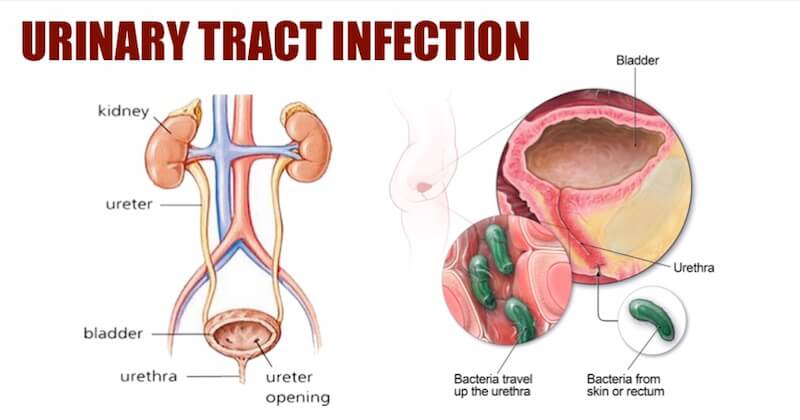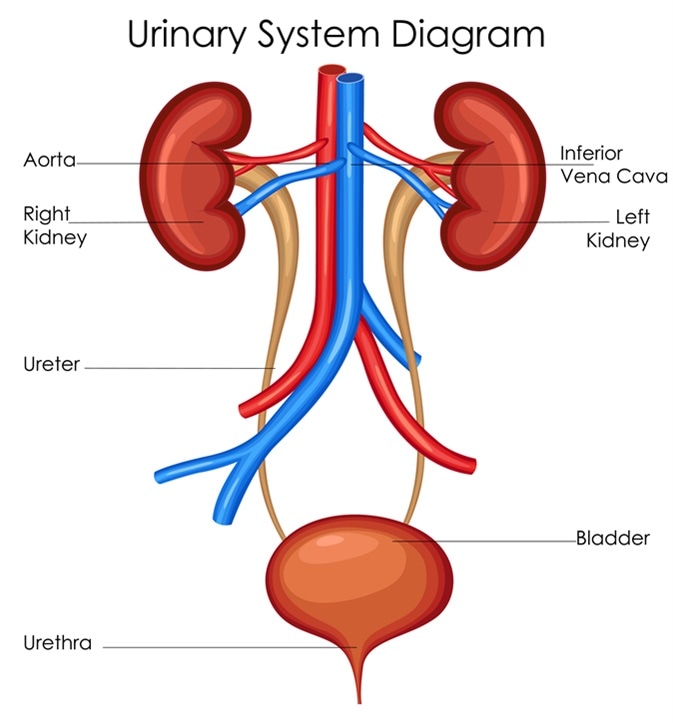Dr. Amany Ayub
MBBS, MPH
Public Health Specialist
Bladder infections are the most common type of urinary tract infection (UTI), but any part of the urinary tract can become infected—the urethra, bladder, ureters, and kidneys.
Risk Factors
Some people are at higher risk of getting a UTI. For example, UTIs are more common in women and girls because their urethras are shorter and closer to the rectum, making it easier for bacteria to enter the urinary tract.

Other factors that can increase the risk of UTIs:
- A previous UTI
- Sexual activity, and especially a new sexual partner
- Changes in the bacteria that live inside the vagina (vaginal flora), for example, caused by menopause or the use of spermicides
- Pregnancy
- Age (older adults and young children are more likely to get UTIs)
- Structural problems in the urinary tract, such as prostate enlargement
- Poor hygiene, particularly in children who are potty-training

Symptoms
Symptoms of a bladder infection can include:
- Pain or burning while urinating
- Frequent urination
- Feeling the need to urinate despite having an empty bladder
- Bloody urine
- Pressure or cramping in the groin or lower abdomen
Symptoms of a kidney infection can include:
- Fever
- Chills
- Lower back pain or pain in the side of your back
- Nausea or vomiting that child may have a UTI
Treatment
Antibiotics will usually treat a UTI.
- The registered doctor will determine if the patient has a UTI by asking about symptoms, doing a physical examination, and ordering urine tests.
- Take Antibiotics exactly as the doctor tells and complete the course.
- Do not share antibiotics with others.
- Do not save them for later. Instead, talk to a pharmacist about safely discarding leftover medicines.
- Talk with your doctor and pharmacist if you have any questions about your antibiotics.
- Drink plenty of water or other fluids. Your doctor might also recommend medicine to help lessen the pain or discomfort.
Prevention
- Urinate after sexual activity.
- Stay well hydrated and urinate regularly.
- Take showers instead of baths.
- Minimize douching, sprays, or powders in the genital area.
- Teach girls when potty training to wipe front to back.
Eating, Diet, & Nutrition
Experts don’t think eating, diet, and nutrition play a role in preventing or treating bladder infections. Although some research shows that cranberry juice, extract, or pills may help prevent these infections, not enough evidence shows this. In addition, research shows that cranberry products are not effective in treating a bladder infection if you already have one.
Drink six to eight 8-ounce glasses of liquid a day. Talk with a health care professional if you can’t drink this amount due to other health problems, such as urinary incontinence, urinary frequency, or kidney failure. The amount of liquid you need to drink depends on the weather and your activity level. For example, if you live, work, or exercise in hot weather, you may need more liquid to replace the fluid you lose through sweat.[1]
[1] https://www.niddk.nih.gov/health-information/urologic-diseases/bladder-infection-uti-in-adults/eating-diet-nutrition

